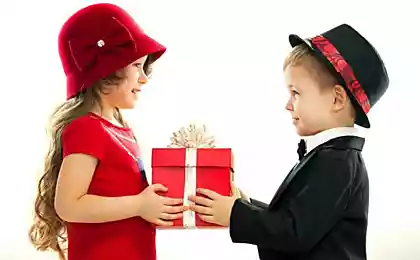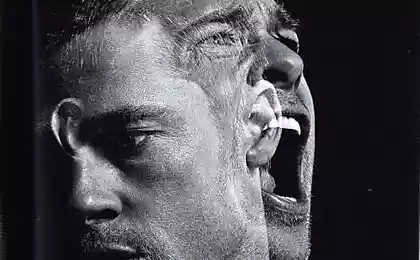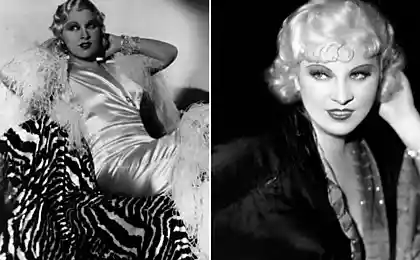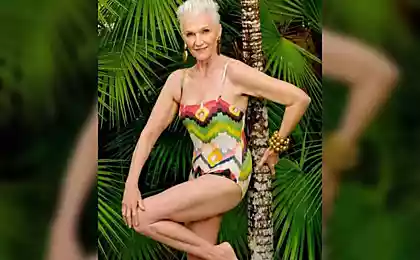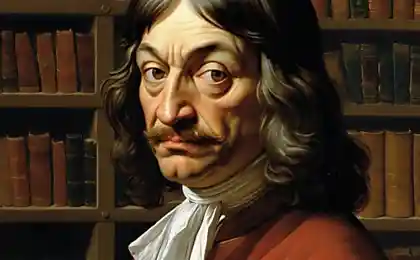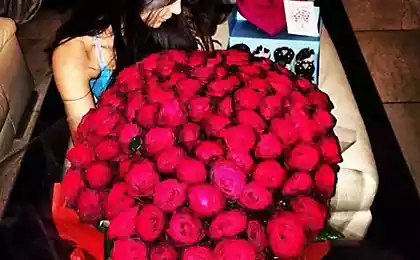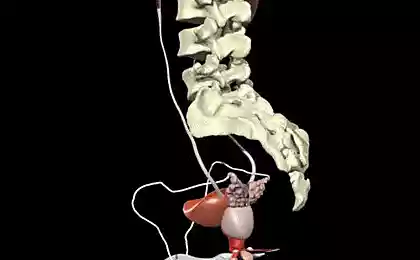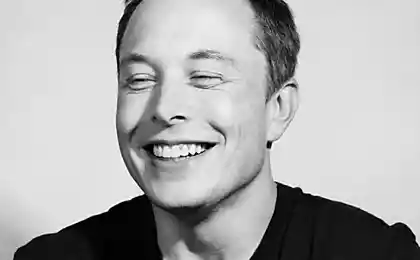531
Fear is NOT an emotion!
Reaction of fright
We turn first to a defensive response, which, although it cannot be called a manifestation of fear or anxiety, is their predecessor. This is a reaction of fright. Of particular importance to us are studies of reactions of fear, carried out by Landis and hunt, because they shed light on the order of occurrence in the body protective reaction, anxiety and fear.
If behind the man suddenly a shot rings out or it affects something unexpected and strong incentive, people:

All this and much more is a "reaction of fright" — a primitive congenital reaction, which occurs spontaneously. It is preceded by the emotions of fear and anxiety.
Landis and hunt in his research has caused this reaction, using a pistol shot and was shooting to capture human behavior in the moment.
The most characteristic feature of the reaction of fear is the bending of the body, "that reminds protective of human behavior, the "shrunken" from the cold".
The reaction of fear people always blink, in addition, the neck usually "pulled forward on the face there is a characteristic facial expression, the shoulders are raised and discharged forward, hands pressed against the torso, bent at the elbows, palms face the torso, the fingers are compressed, the torso is moving forward, reduced abdominal muscles, bend your knees....
This basic reaction is not amenable to human control, it is universal, shared by blacks and white, for both children and adults, as well as primates and some higher animals.
This reaction, when viewed in the neurological aspect, suppresses the higher nervous centres, as these centres are not able to so quickly integrate the received pulses. Thus, we can say that we are frightened before we learn what it threatens us.
At its core, this reaction is not fear or anxiety. "It is better to call to fear-emotional reaction," the right to notice Landis and hunt.
"It's an instant reaction to an unexpected intense stimulus which requires the body some response that goes beyond the ordinary. It resembles a response to a dangerous situation, but is instantaneous transitory response much more simple in its organization and manifestations than the so-called "emotions".
Emotions in the proper sense of the word arises after the reaction of fright.
Adult subjects in the experiment, Landis and hunt expressed such secondary behavioral responses (emotions), like curiosity, irritation and fear after a fright. Researchers believe that these secondary behaviors are a "bridge between innate responses and emerged in the process of learning is socially constructed and often deliberate types of reactions."
Of interest is another observation made in this study: the younger the child was, the less secondary behaviors followed by reaction of fright.

The child in the first months of life shock should have quite a bit of secondary reactions. "Our work — written by Landis and hunt, shows that as they grow older the child is showing more secondary behavioral reactions -- the Crying, the behavior of "escape" when the child either turns his head away from the sound source, or the unfolding of the whole body and crawls, — the number of such reactions increases as they grow older, baby".
The reaction of fear as to the emotional reaction of anxiety and fear allows you to do many interesting insights. For example, Lawrence Kobi sees in this reaction, "ontogeny of anxiety." In his opinion, the reaction of fear is the first sign that between the human and the surrounding world there is a gap. The embryo, in the opinion of Cuba can not experience the reaction of fear; in this case there is no interval between stimulus and reaction. The baby and the reaction of fear is born at the same time. First there is a "gap" between man and his environment. The baby can already sense the anticipation, the shift of events into the future, frustration. According to Cube as anxiety and thinking can occur only when there is a similar "gap" between man and the world, and at first an alarm and then thinking. "Anxiety in a man's life connects between a reaction of fear and occurrence of all processes of thinking."
According to Landis and hunt, the reaction of fear belongs to those forms of behaviour that Goldstein has termed a "catastrophic reaction". One might think that the reaction of fear is a primitive innate protective reaction, the predecessor of emotional reactions, which become anxiety and fear.published
Author: Rollo May
P. S. And remember, just changing your mind — together we change the world! ©
Source: www.psychologos.ru/articles/view/ispug-eto-ne-emocia
We turn first to a defensive response, which, although it cannot be called a manifestation of fear or anxiety, is their predecessor. This is a reaction of fright. Of particular importance to us are studies of reactions of fear, carried out by Landis and hunt, because they shed light on the order of occurrence in the body protective reaction, anxiety and fear.
If behind the man suddenly a shot rings out or it affects something unexpected and strong incentive, people:
- quickly bend,
- sharply raises his head,
- blinks.

All this and much more is a "reaction of fright" — a primitive congenital reaction, which occurs spontaneously. It is preceded by the emotions of fear and anxiety.
Landis and hunt in his research has caused this reaction, using a pistol shot and was shooting to capture human behavior in the moment.
The most characteristic feature of the reaction of fear is the bending of the body, "that reminds protective of human behavior, the "shrunken" from the cold".
The reaction of fear people always blink, in addition, the neck usually "pulled forward on the face there is a characteristic facial expression, the shoulders are raised and discharged forward, hands pressed against the torso, bent at the elbows, palms face the torso, the fingers are compressed, the torso is moving forward, reduced abdominal muscles, bend your knees....
This basic reaction is not amenable to human control, it is universal, shared by blacks and white, for both children and adults, as well as primates and some higher animals.
This reaction, when viewed in the neurological aspect, suppresses the higher nervous centres, as these centres are not able to so quickly integrate the received pulses. Thus, we can say that we are frightened before we learn what it threatens us.
At its core, this reaction is not fear or anxiety. "It is better to call to fear-emotional reaction," the right to notice Landis and hunt.
"It's an instant reaction to an unexpected intense stimulus which requires the body some response that goes beyond the ordinary. It resembles a response to a dangerous situation, but is instantaneous transitory response much more simple in its organization and manifestations than the so-called "emotions".
Emotions in the proper sense of the word arises after the reaction of fright.
Adult subjects in the experiment, Landis and hunt expressed such secondary behavioral responses (emotions), like curiosity, irritation and fear after a fright. Researchers believe that these secondary behaviors are a "bridge between innate responses and emerged in the process of learning is socially constructed and often deliberate types of reactions."
Of interest is another observation made in this study: the younger the child was, the less secondary behaviors followed by reaction of fright.

The child in the first months of life shock should have quite a bit of secondary reactions. "Our work — written by Landis and hunt, shows that as they grow older the child is showing more secondary behavioral reactions -- the Crying, the behavior of "escape" when the child either turns his head away from the sound source, or the unfolding of the whole body and crawls, — the number of such reactions increases as they grow older, baby".
The reaction of fear as to the emotional reaction of anxiety and fear allows you to do many interesting insights. For example, Lawrence Kobi sees in this reaction, "ontogeny of anxiety." In his opinion, the reaction of fear is the first sign that between the human and the surrounding world there is a gap. The embryo, in the opinion of Cuba can not experience the reaction of fear; in this case there is no interval between stimulus and reaction. The baby and the reaction of fear is born at the same time. First there is a "gap" between man and his environment. The baby can already sense the anticipation, the shift of events into the future, frustration. According to Cube as anxiety and thinking can occur only when there is a similar "gap" between man and the world, and at first an alarm and then thinking. "Anxiety in a man's life connects between a reaction of fear and occurrence of all processes of thinking."
According to Landis and hunt, the reaction of fear belongs to those forms of behaviour that Goldstein has termed a "catastrophic reaction". One might think that the reaction of fear is a primitive innate protective reaction, the predecessor of emotional reactions, which become anxiety and fear.published
Author: Rollo May
P. S. And remember, just changing your mind — together we change the world! ©
Source: www.psychologos.ru/articles/view/ispug-eto-ne-emocia

